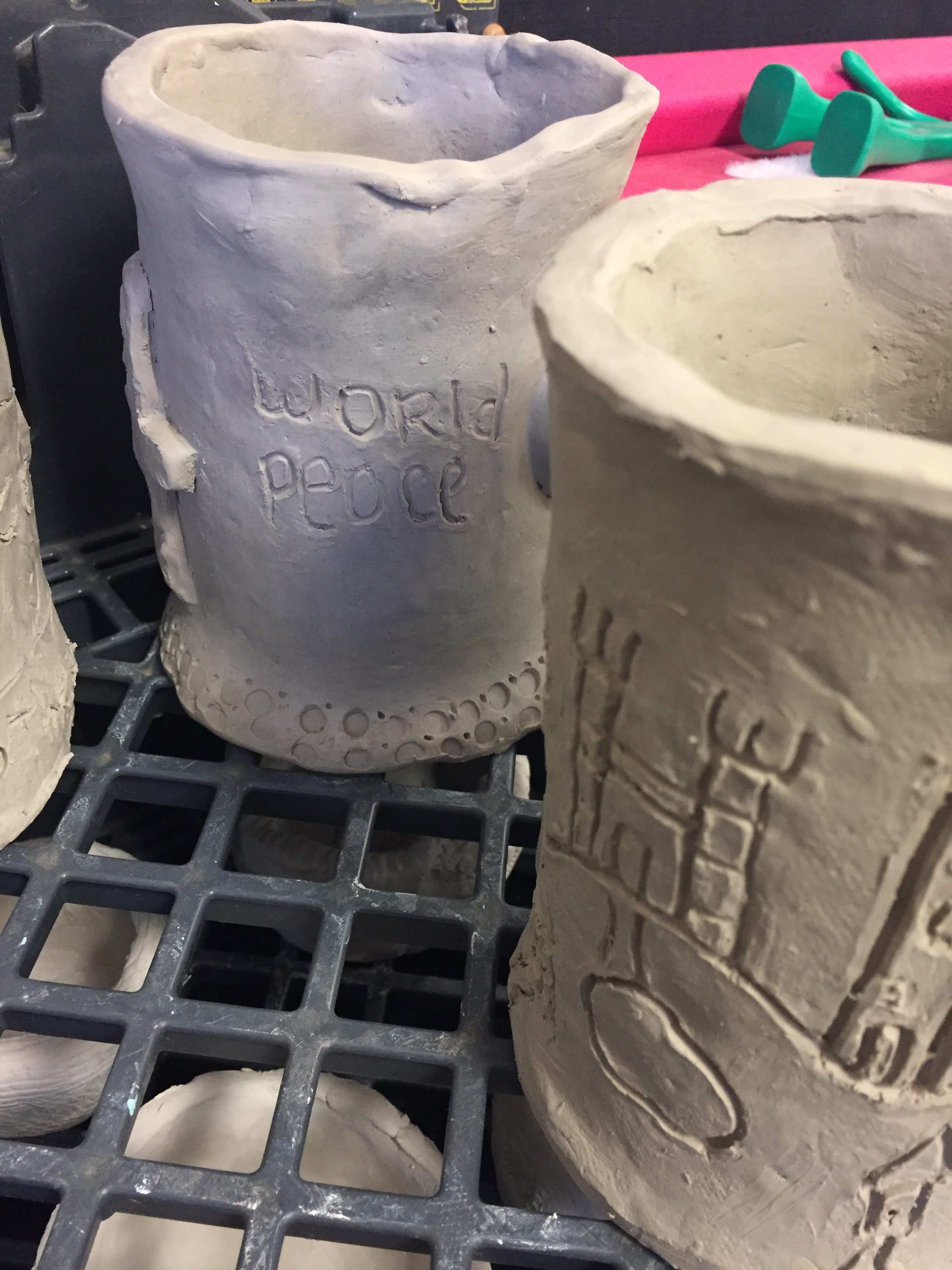As we approach the last couple of months of the school year, my 8th Grade Honors Art students are working on a grid drawing of an assortment of candy. This project began as a photo project which began as a composition project. Since I love to weave "choice" into my lessons whenever possible, I asked students for a list of candy I should buy for this lesson. They complied. Imagine that! After I supplied all of the delectable delights Walgreens had to offer, students were instructed to choose an odd number and variety of candy, and to position the candy in a random fashion on a piece of white paper. Next students were to take a cropped photo of this assemblage. I spoke briefly to them about camera angles and lighting and showed them how to enhance the lighting on their iPhones. They then printed their photos out and, using a grid transparency, they made another copy of the photos. They could skip the last step, if they used a GRID App to take the photo in the first place. Next students lightly drew a one-inch grid on the surface of a 15 x 20-inch piece of illustration board.
Since this wasn't the first time these students had done a grid drawing, I gave them a few tips and told them if they needed to review, they could revisit my YouTube Channel's Lesson on Drawing Using a Grid which is posted at the end of this entry. They began with a line drawing which I periodically checked for accuracy. Some of them are now at the point where they will begin shading the drawing this week, referring to the gradient scale they made back in the Fall.
After students finish shading, they will add watercolor and colored pencil to complete this realistic drawing. Yes, they will add these right on top of the graphite.
I have been working on this project along with the students; drawing and painting a little ahead, so that I can better guide them with this lesson. It also seems to be inspirational for them to see my painting develop. However, they are all working at a different pace. And this project is a perfect example of how students approach learning differently.
Some of the students who are naturally talented at sketching, or who sketch a lot, seem to veer away from the grid and use a little “artistic license” when it comes to using the photo reference. Others move slower constantly having to find their place on the grid, while still others who meticulously follow the grid are pleasantly surprised at how well their drawings are coming together.
As a teacher, I want my students to know my expectations, but I do not want to “standardize” their outcomes. I want them to learn from this project, I want them to stretch their talents and skills, but most of all, I want them to have a positive learning experience. I know that not all of their drawings will be at the same skill level. But it is my hope that each child will find something learned from this lesson that will help them with the next, or cause them to look a little closer at a work of art in a gallery, or notice how the Friday night lights effect the Tootsie Pop they buy at the ballgame.


![IMG_0179[1].jpg](https://images.squarespace-cdn.com/content/v1/546d808ae4b0c6e0e95a3a3d/1522026751965-9HUNGC8ARBUC05R8WRC1/IMG_0179%5B1%5D.jpg)





























